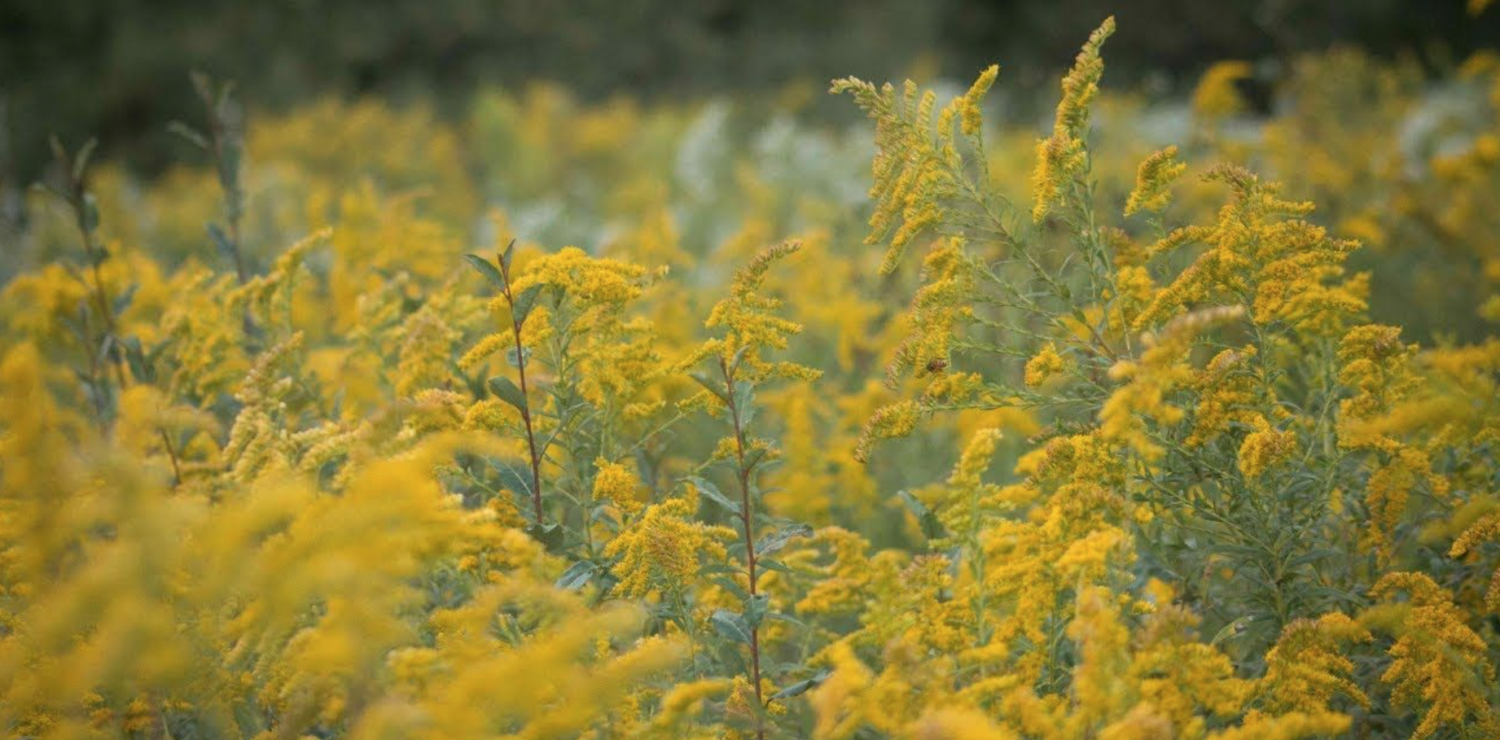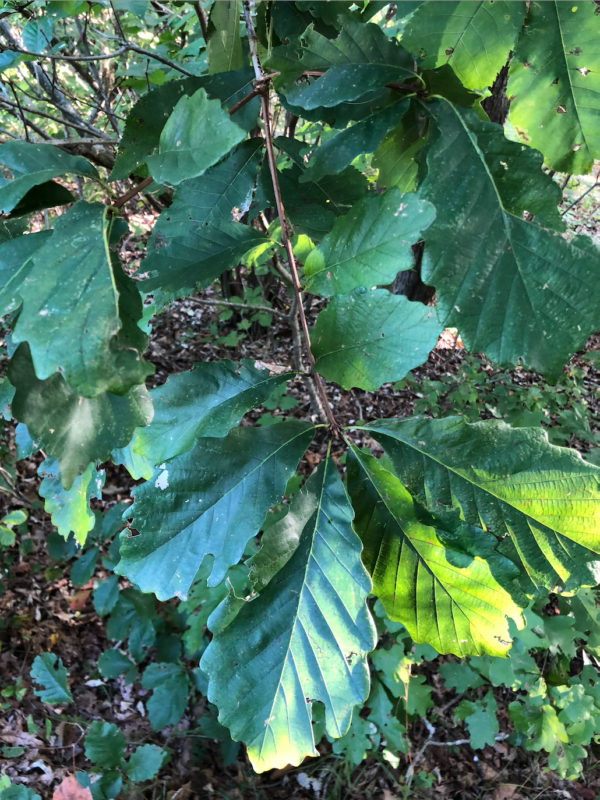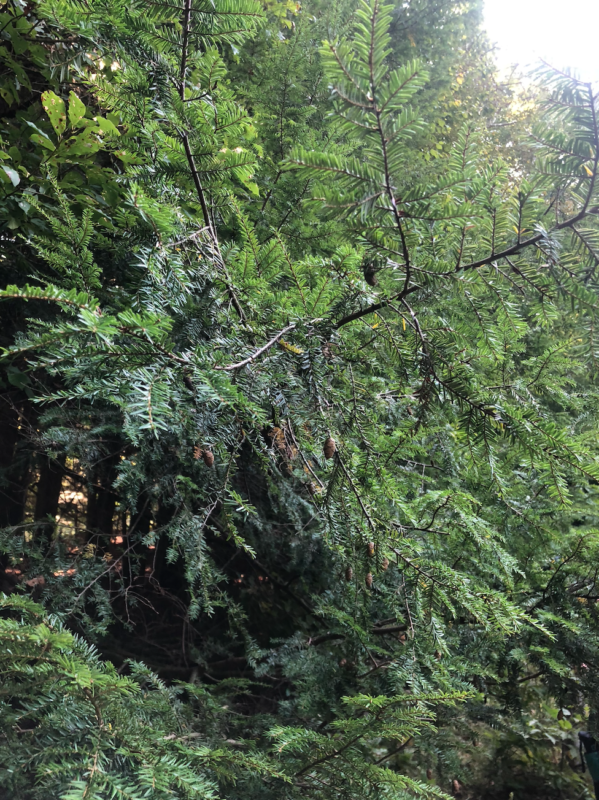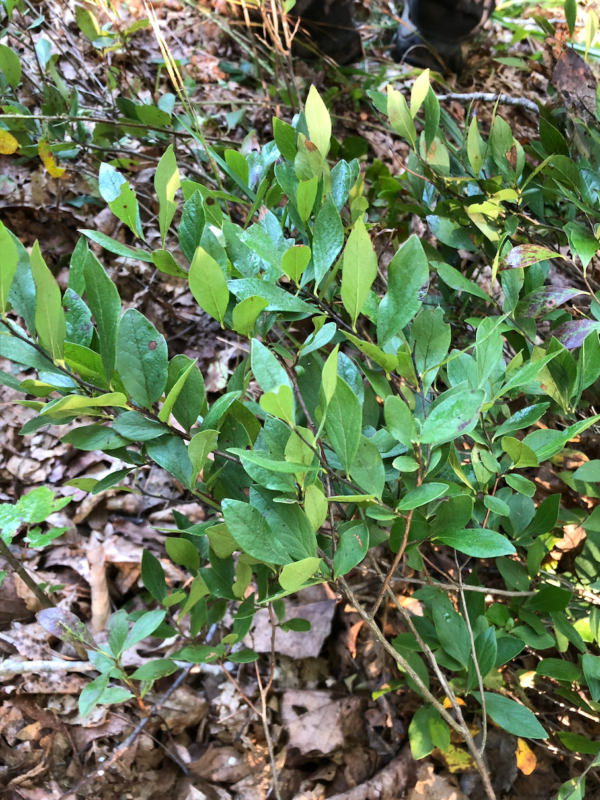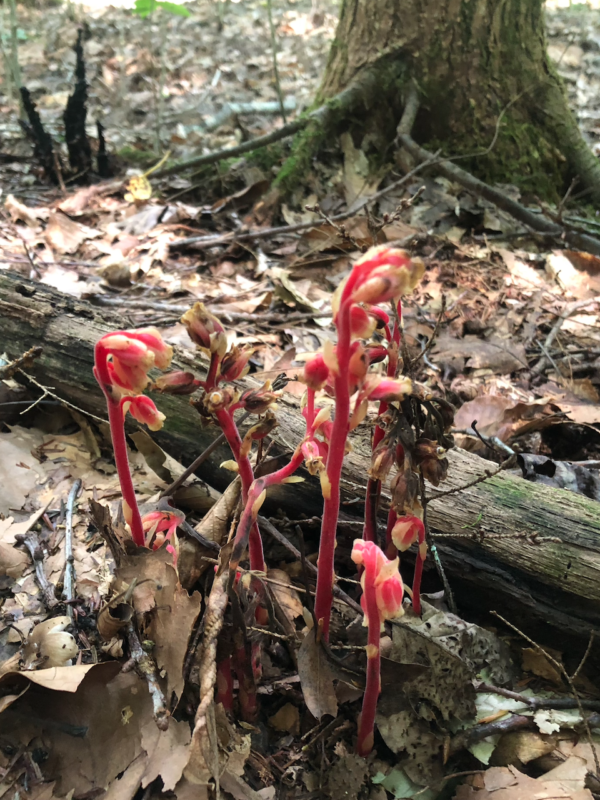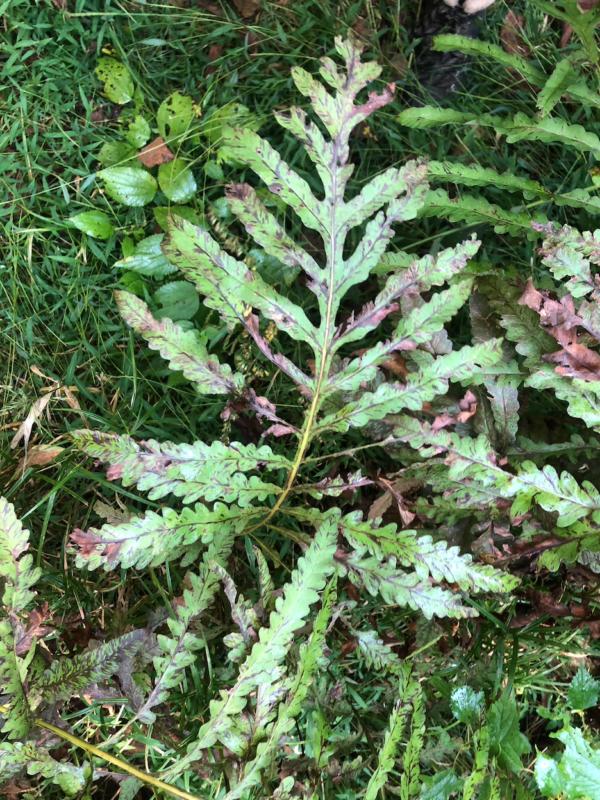I. Substrate-Associated Plants
- Chestnut oak (Quercus montana)
- The chestnut oak is able to survive where other oaks cannot–– in steep, rocky sites.
- The inner bark of the chestnut oak is high is tannic acid, which has many medicinal uses including as an “antidote” in cases of poisoning, treating skin ailments like cold sores, fever blisters, rashes, poison ivy, ingrown toenails, as well as other issues like sore throats, or to stop bleeding. It is also found in foods and beverages as a flavoring.
- Eastern Hemlock (Tsuga canadensis)
- The bark of the eastern hemlock was commonly used to tan hides. Its inner bark and leaf twig tips can be made into tea consumed to treat various medical ailments and used as a topical to treat skin ailments. The bark is also useful in stopping bleeding.
- This tree also happens to be the state tree of Pennsylvania.
- Sourwood (Oxydendrum arboreum)
- The lumber of the sourwood is utilized in the making of tool handles.
- The sour taste of the leaves are used as a thirst-quencher by hikers and mountain climbers, and can be brewed into a tonic.
- Read more at https://www.uky.edu/hort/Sourwood

- Read more at https://www.uky.edu/hort/Sourwood
- Low blueberry (Vaccinium angustifolium)
- The low blueberry can be utilized for its edible berries. The berries can either be eaten raw, cooked into pastries, or made into preserves.
- The low blueberry is very closely related to the blueberries that are seen in the grocery store and frequently utilized in our food. There are various species of the genus Vaccinium that have been improved by plant experts and breeders to be grown and sold commercially–– the highbush blueberry (V. corymbosum), sweet lowbush blueberry (V. angustifolium), and cranberry (V. macrocarpon).
II. Biotic Threats to Forest Health
- White Walnut (Butternut) (Juglans cinerea)
- The white walnut is in decline due to the “butternut canker”, which is a fungal disease that attacks the branches and stems of the tree and is typically fatal. The butternut could face extinction if a solution is not found.
- A proposed solution to saving the butternut is to cross-breed the butternut with a species that is resistant to canker. This hybrid can then be breed back with the butternut to maintain as many attributes of the butternut as possible, while maintaining the resistance to canker.
- The overconsumption of the butternut for lumber is also responsible for its decline.
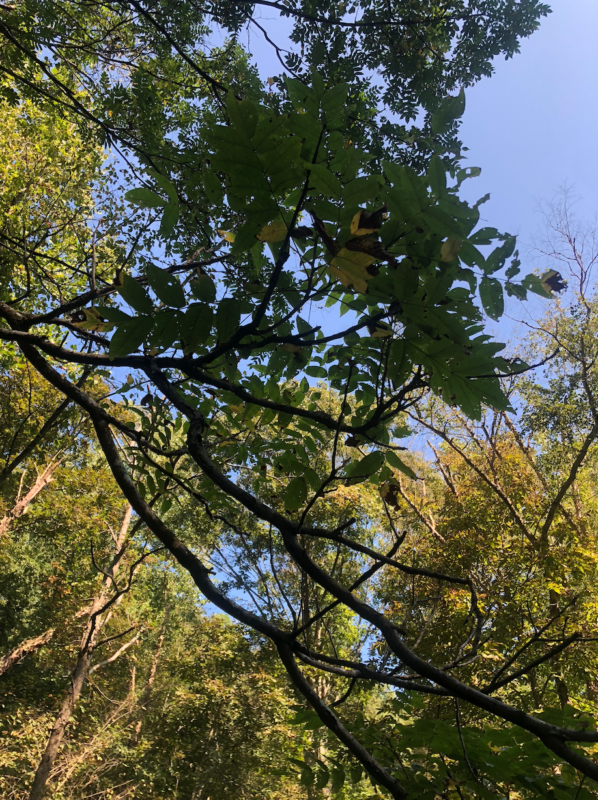 Eastern Hemlock (Tsuga canadensis)
Eastern Hemlock (Tsuga canadensis)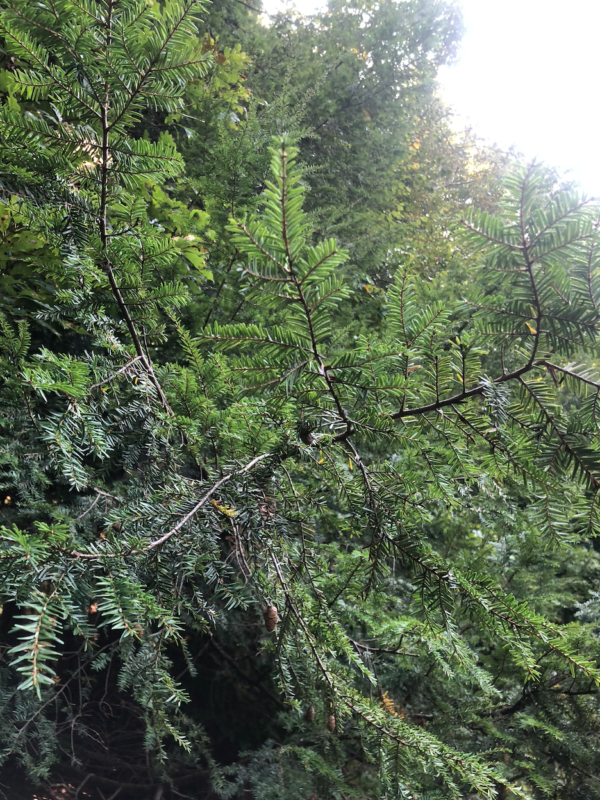
- American Beech (Fagus grandifolia)
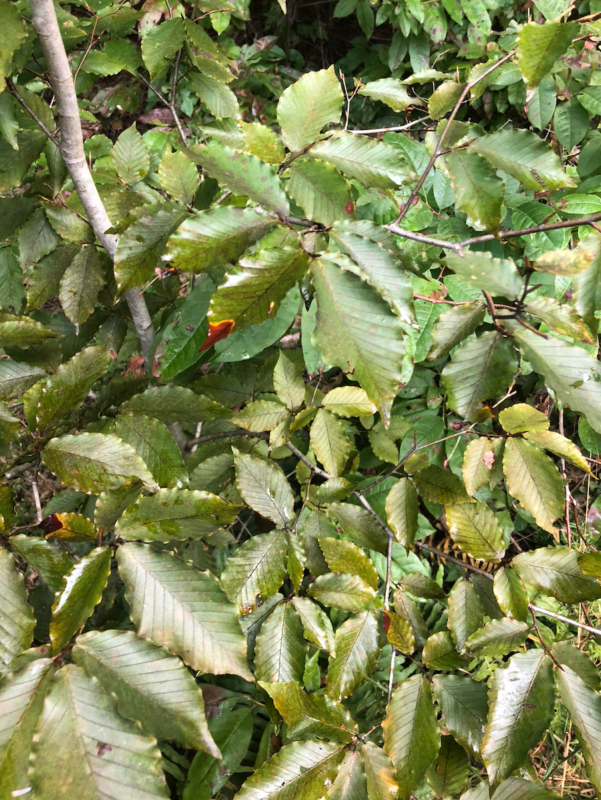
- American Chestnut (Castenea dentata) – Not Pictured
- Chestnut blight has made the American chestnut face near extinction. The organism Cryphonectria parasitica is the cause for the blight.
- The American chestnut is not extinct yet, as the species grows aggressively in logged areas and disturbed sites. They reach the early-stage shrub phase, and then typically die shortly after from blight. This gives conservationists hope as they can utilize this gene pool for restoration efforts.
- Restoration efforts include breeding the American chestnut for resistance, altering the virulence of Cryphonectria parasitica and its effects, and genetic engineering of the American chestnut to produce increased amount of oxalate oxidase (what breaks down oxalic acid) to combat the virulent production of oxalic acid coming from Cryphonectria parasitica.
- Read more at https://www.esf.edu/chestnut/background.htm
III. Appalachian Gametophyte
When reading and reflecting on the description of the Appalachian gametophyte by Strausbaugh and Flora, I would argue that the description of the Appalachian gametophyte as “sterile” is not the appropriate term.
Vittaria appalacbiana, known commonly as the Appalachian gametophyte, is remarkable as it is one of three ferns that only exist as a gametophyte. In fact, mature sporophytes have never been observed. It reproduces as a gametophyte. Typically, ferns alternate between sporophyte and gametophyte phases, where the sporophyte phase is seen as the dominant portion of the life cycle.
Fern gammae are significantly larger than spores and are about 0.2-1.0mm in length. This is due to the face that the Appalachian gametophyte is reproducing asexually via these gammae. Since the fern gammae are significantly larger than spores, they cannot travel the same way (long-distance dispersal by the wind). The fern gammae rely on short-distance travel by wind, water, animals, slugs, or ants. Slug dispersal was supported by the work of Kimmerer and Young, who explained in their 1995 publication that spores were able to pass through the gut of the slug, and were able to germinate in the slug waste. They also suggested that the success of germination had little to do with the type of plant species’ spore, but rather the type of slug, therefore suggesting that slugs were the important intermediate in a spores germination success.
The idea of the fern gammae having a limited, short-distance dispersal is supported by the fact that the Appalachian gametophyte is not present north of the last glacial maximum–– it was never able to get there. However, when the Appalachian gametophyte is taken and transplanted into these areas, it is able to survive, suggesting it is the lack of dispersal keeping it from moving north. It is also observed that the Appalachian gametophyte does not populate in recently disturbed areas, even within the range of the species. Overall, it is suggested that the current distribution of the Appalachian gametophyte is due to spore dispersal from a mature sporophyte. However, its small range of dispersal suggests that the gametophytes lost the ability to form mature sporophytes before, or during, the last ice age.
The current populations of the Appalachian gametophyte are not being sustained by long-distance dispersal from a tropical sporophyte source because of the short-distance dispersal observed in the southern regions of New York. It is also suggested from the phylogeny that dispersal from the tropics only occurred once. It is concluded that the most likely explanation for the wide range of the Appalachian gametophyte is that it likely had a mature and fully-functioning sporophyte at one point, and that more temperate climates in the Appalachians at the time allowed from the “tropical” growth. The current distribution is due to spore dispersal, with the sporophyte becoming extinct before or during the Pleistocene glaciers.
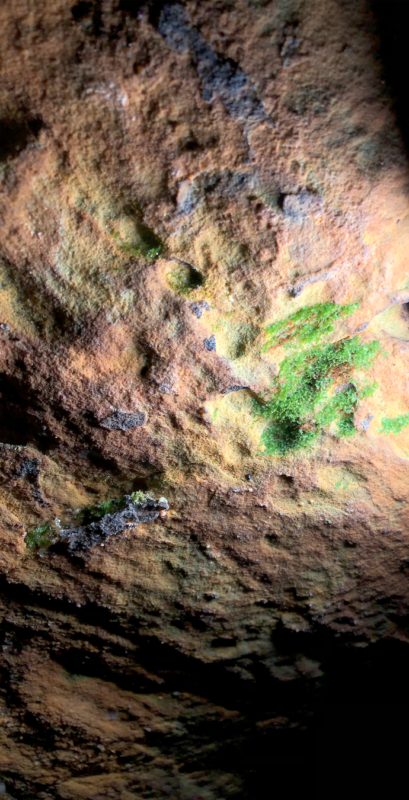
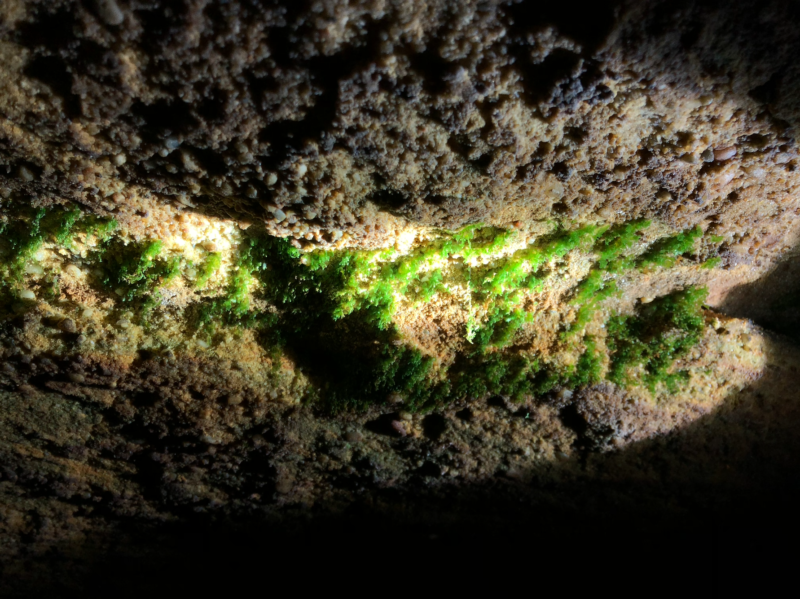
IV. Two Aromatic Plants
- Spicebush (Lindera benzoin)
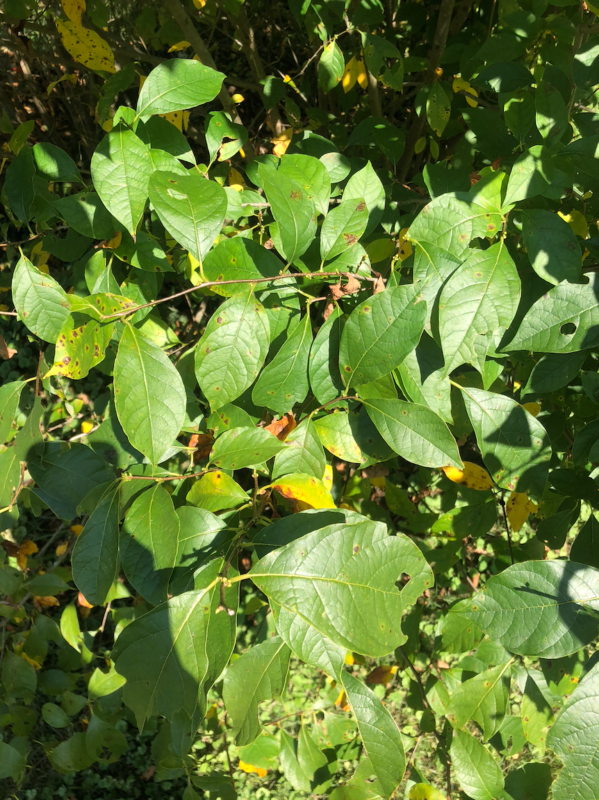
- Black birch (Betula lenta)
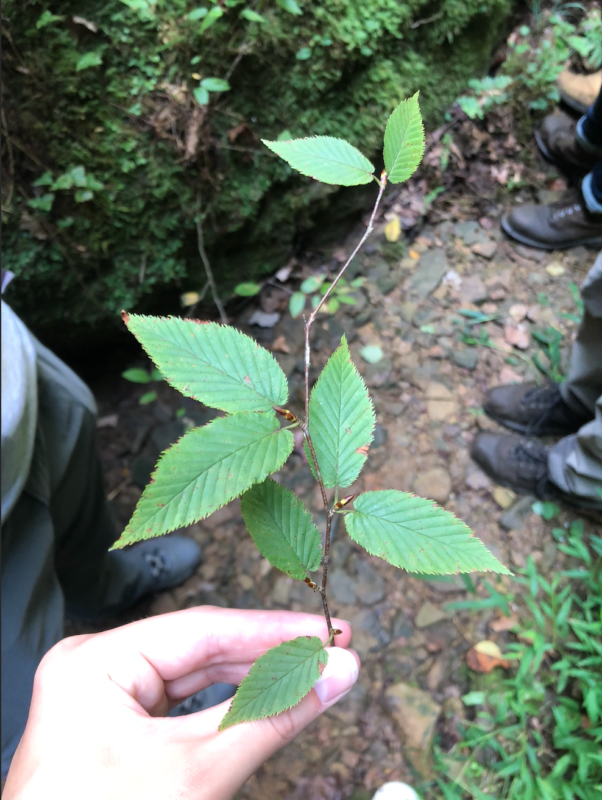
V. Miscellaneous!
- Pinesap (Monotropa hypopitys)
- Plants within the pinesap genus were commonly used as an ingredient in eye tonics, sedatives, pain relievers, general tonics, and had various other medical uses.
- The pinesap does not have chlorophyll and therefore cannot perform photosynthesis. Instead, it connects with fungus in the soil to parasitically receive food and nutrients from the host fungus. These funguses also typically get their nutrients from tree roots.
- Southern reindeer lichen (Cladonia rangiferina)
- Reindeer lichen can be found abundantly growing in Arctic regions, northern tundras, and Siberia. It is consumed by animals like reindeer, moose, caribou, and oxen.
- Scandinavian countries have used reindeer lichen to make alcohol, but its slow growth rate makes it difficult to produce.
- Read more at https://www.britannica.com/science/reindeer-lichen
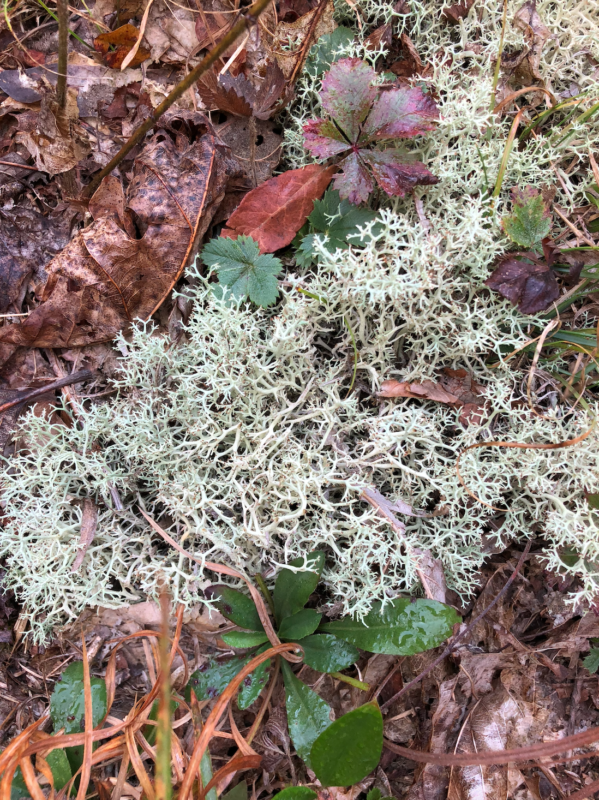
- Read more at https://www.britannica.com/science/reindeer-lichen
- Sensitive fern (Onoclea sensibilis)
- The sensitive fern has an incredibly long fossil record. When observing sandstone and mudstone deposits in Canada from the Paleocene age (more than 55 million years ago), specimens of sensitive fern can be found and determined to be this exact species.
- The sensitive fern is considered toxic to livestock and horses. Additionally, deer avoid eating it, so this can help the fern spread by reducing competition.
- Shining clubmoss (Huperzia lucidula)
- The shining clubmoss has various medicinal uses, including treating problems of the urinary tract, diarrhea, problems of the digestive tract, headaches, aliments of the skin, and can even help to induce labor in pregnant individuals.
- Finally… the Dogwood leaf trick!

